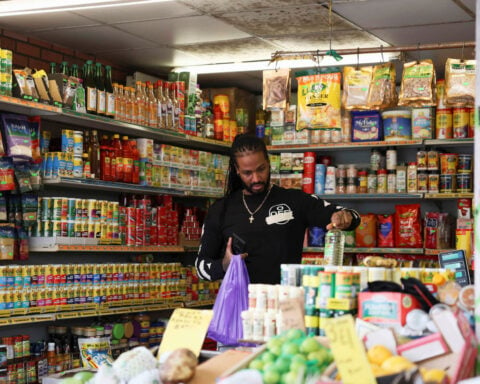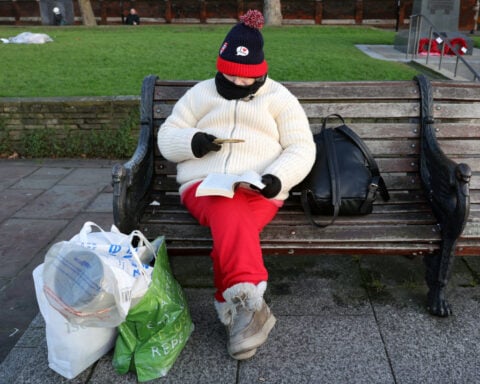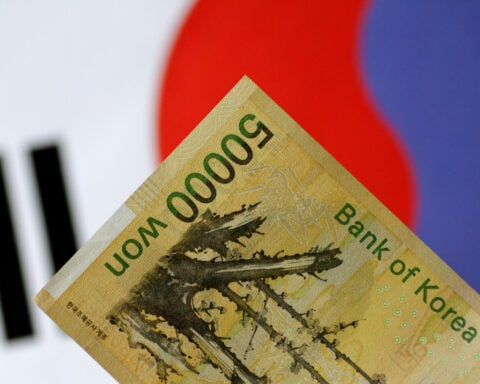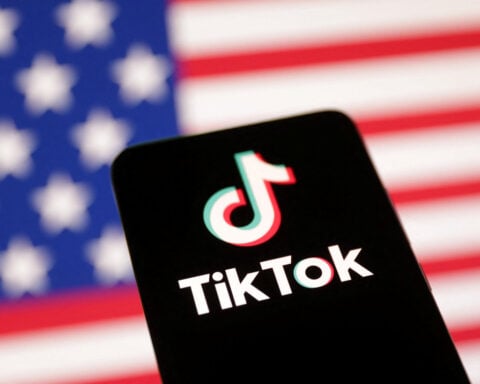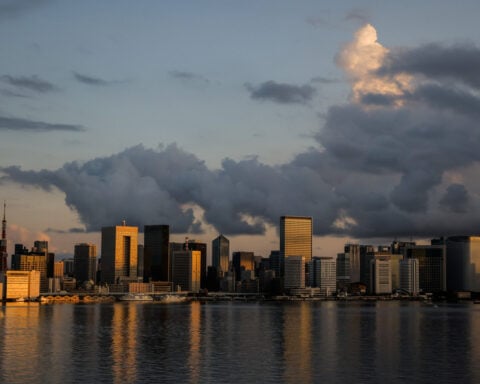(CNN) — Inflation continues to loosen its grip on American consumers, with price hikes slowing by the most in three and a half years, according to new data from the Bureau of Labor Statistics released Wednesday.
The Consumer Price Index, a measurement of price changes for a commonly purchased basket of goods and services, briskly retreated from a 2.9% annual increase in July to 2.5% in August, marking the lowest annual increase since February 2021 and landing at a rate that matched the average seen in 2018.
On a monthly basis, prices were unchanged from July’s increase of 0.2%.
August’s overall inflation print came in better than expected (economists, by consensus, were projecting a 2.5% annual gain and 0.2% lift for the month). However, a closely watched measure of underlying inflation showed that some price pressures — specifically, housing-related costs — remained stubbornly elevated.
As such, this all but cements a quarter-point rate cut from the Federal Reserve at its monetary policy meeting next week, Ben Ayers, senior economist for Nationwide, wrote in a note issued Wednesday.
“The road to normal inflation hit a bump in August as lingering pressures for housing and service costs once again cropped up,” Ayers wrote. “This should clinch a smaller, [quarter-point] rate cut from the Fed next week as Fed officials remain wary to feed any lingering price momentum for the economy.”
Fed officials are widely expected to begin loosening monetary policy next week by trimming the central bank’s benchmark rate, making it less expensive for individuals and businesses to borrow money. Inflation has slowed dramatically since central bankers began their historic tightening cycle in March 2022; and while some price pressures still linger, their focus has shifted to the health of the labor market.
Housing-related inflation continues to sting
Economists were expecting the annual rate would slow significantly last month to 2.6% annually, according to FactSet. That’s in part due to favorable year-ago comparisons: Last summer’s gas price spike jolted inflation higher in August 2023.
Falling gas prices helped bring overall inflation lower last month, dropping by 0.6% for the month and 10.3% annually.
Grocery prices held flat for the month, and overall food inflation was up 0.1% in August and 2.1% annually.
“Inflation continues to decelerate on tend, but we’re seeing it take longer for some of the impact of the pandemic to fully unwind,” Sarah House, senior economist at Wells Fargo, told CNN in an interview Wednesday. “We’re continuing to see a correction in goods prices, which is where we really saw the initial thrust of inflation. And, in contrast, it seems to be taking longer for the more benign price environment to show up in terms of services categories.”
Excluding food and energy, which are typically volatile categories, the core CPI gauge rose 0.3% from July, a faster-than-expected increase that held the annual rate at 3.2%.
Economists had projected core would increase 0.2% and hold at 3.2% for the year ended in August.
The cost of owning and renting a home continued to be the leading driver of inflation, the BLS noted in the report. The shelter index rose 0.5% for the month and was the “main factor” in the overall increase. On an annual basis, it’s up 5.2% and accounts for more than 70% of the annual increase in core CPI.
Shelter, which accounts for more than one-third of the overall CPI, remains the biggest impediment to inflation’s descent. However, economists say, it’s only a matter of time before that hurdle gives.
That’s because the BLS’ measurement of housing-related prices is a very lagged and amorphous process (including estimating the rental value of owner-occupied homes).
During the past year, the CPI’s shelter index has better reflected this: After peaking at 8.2% in March 2023, it has slowly but steadily moderated each month since and fell to a two-year low of 5.1% in July.
However, it popped back higher in August.
“It’s a long lag between when current market conditions can show up, just as it’s a long time between tenant turnover, so that can delay when you see current market conditions reflected,” House said.
“But, it also could reflect that we’ve seen a bit of a shift in preferences, whether that’s remote work or just demographics, where you have a larger share of the population now of the age where single-family living is more attractive, which is keeping some upward pressure,” she said.
Incomes keeping up with inflation
Prices may not be rising as quickly as they have been, but that might not bring much solace to American households who feel the cumulative brunt of three-plus years of higher-than-typical inflation.
The overall CPI is a good 21% higher than it was in February 2020. In recent history over a comparable 55-month period, that index would typically rise a little more than 10%, BLS data shows.
While August’s report continued to emphasize how slow of a process it is to get inflation back to normal (the Fed’s target rate is 2%, based on the Personal Consumption Expenditures price index), there were plenty of bright spots in the data.
Grocery prices are rising at a pace of 0.9% annually, the lowest rate since the middle of 2021 and landing in line with the average increase seen in 2019. The “food away from home” category, which captures price changes at restaurants and other places, slowed to 4%, matching a three-year low.
August’s report also showed some easing in another pain point for consumers: rapidly rising auto insurance costs.
Car insurance price increases underscore both the long-tailed nature of inflation as well as the economic rat’s nest of the pandemic.
The sharp escalation of insurance prices starting in the fall of 2022 and peaking earlier this year at 22.6% were caused by a confluence of events: The global chip shortage in 2021 that choked off supply and caused car prices to spike; higher repair costs due to shortages and people keeping used cars for longer; and insurers trying to keep up with underwriting losses.
However, car insurance price hikes have slowed sharply in recent months and in August landed at 16.5%, the lowest annual increase since June 2023.
But perhaps most importantly, average wage gains continue to outpace inflation growth: Inflation-adjusted (or real) average hourly earnings are up 1.3% in August from a year before.
“We’re seeing what we would call real income gains,” Wells Fargo’s House said. “It’s tough to have to think about pricing decisions so much and where you shop or whether you’re going to have to switch carriers for certain things; but, overall, in the aggregate, we’re seeing incomes keep up with these price increases.”
The-CNN-Wire
™ & © 2024 Cable News Network, Inc., a Warner Bros. Discovery Company. All rights reserved.

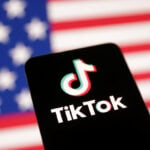 TikTok seeks to reassure U.S. employees ahead of Jan. 19 ban deadline
TikTok seeks to reassure U.S. employees ahead of Jan. 19 ban deadline
 US won't seek charges in unarmed Black motorist Ronald Greene's fatal 2019 arrest
US won't seek charges in unarmed Black motorist Ronald Greene's fatal 2019 arrest
 Euro zone households could increase consumption, ECB chief economist says
Euro zone households could increase consumption, ECB chief economist says
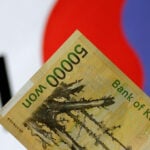 Foreigners sold South Korean equities last month by most since early 2020
Foreigners sold South Korean equities last month by most since early 2020
 Trump and Biden national and homeland security staff will meet Wednesday for threat exercises
Trump and Biden national and homeland security staff will meet Wednesday for threat exercises
 As fires ravage Los Angeles, Tiger Woods isn't sure what will happen with Riviera tournament
As fires ravage Los Angeles, Tiger Woods isn't sure what will happen with Riviera tournament
 Antetokounmpo gets 50th career triple-double as Bucks win 130-115 to end Kings' 7-game win streak
Antetokounmpo gets 50th career triple-double as Bucks win 130-115 to end Kings' 7-game win streak
 No 97 Laura Siegemund upsets Olympic champion Zheng Qinwen at the Australian Open
No 97 Laura Siegemund upsets Olympic champion Zheng Qinwen at the Australian Open



